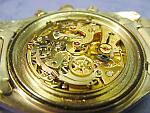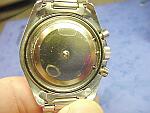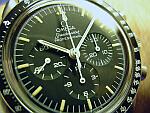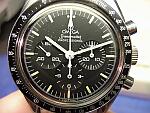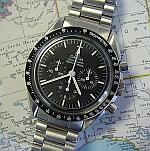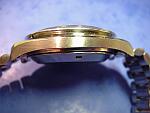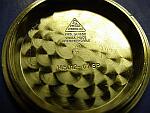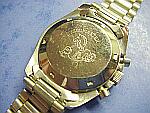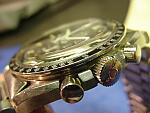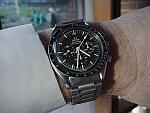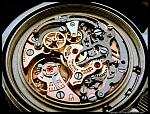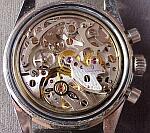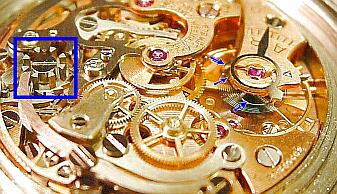
Photo - NASA
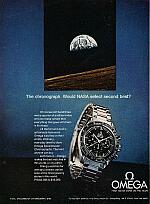
THE SPEEDY PRO CAL. 321
(CONTINUED - PAGE 2 OF 4)
Introduction
IT NEVER FAILS to amaze me how much we watch collectors take for granted. Take, for example, the instant recognisability of a Speedmaster Professional. Unmistakable, classic design. You can spot it through the gloom of a winter's afternoon in Chicago, Glasgow or Novgorod, half-hidden beneath the cuff of a duffle coat 50 metres distant, and know straight away what it is. Not so the remaining 99.9999% of the population.
I was having lunch with some work colleagues when I couldn't resist displaying my latest acquisition—a 1968 Speedy. There were some polite murmurings of appreciation around the table. Then one of them said, "That's nice—what make is it?" I was speechless. How could they not know it was an Omega? I eventually recovered my power of speech, told them what it was, and then said, "This is a piece of history, you know. This is identical to the first watch worn on the Moon. In fact, the actual watch first worn on the Moon probably came from the same batch as this one." I was stretching it, I knew, but I had them hooked and I wasn't about to let 'em go. They asked to see the watch again and I passed it around, watching their faces as they gazed upon the dial. I could see them imagining themselves as astronauts, hopping across the virginal grey-white dust of that barren sphere, or perhaps tumbling slowly and gracefully in the weightlessness of space. I held forth on the Speedmaster's history and virtues for about five minutes until I saw their eyes glaze over, the interest waning. The table talk returned, as usual, to Aussie-rules football. There's a limit to how much watch-talk non-WIS's can endure. But for those five minutes they too had become absorbed in the extraordinary story of a remarkable watch, a watch that has achieved a unique place in the history of horology.
It all started, as usual, with a visit to John, my watchmaker. I was just passing and thought I'd pay him a visit, to see how he was progressing with repairing my wife's vintage Oris. He shook his head apologetically. "Haven't managed to get round to it yet, Les" he said sadly. "I've had staff off sick and a sudden rush of urgent work..." His voice trailed off.
"Not to worry," I said, thankful it wasn't my watch I was waiting for. "Anything new come in lately?" I wasn't intending to buy anything, I was just curious. A gleam came into his eye.
"Funny you should say that," he said, suddenly animated, "I bought these from a chap only the other day." He reached into the "pre-loved" display case and withdrew a huge 1970s Breitling Chronomat in near-mint condition, and a vintage Omega Speedy Pro which was slightly the worse for wear. Not beaten up you understand, but not mint either.
"He said he used to travel a lot around the Arab countries," John continued, "so he probably picked them up duty-free."
I held the massive Breitling in my hand, tried it on, admired it, and returned it to the counter. I already had a vintage Navitimer, which I preferred to the Chronomat, so that was a non-starter. I turned my attention to the Speedy. As I slipped it onto my wrist I was suddenly taken back 30-odd years, to where the story really begins for me.
When I turned 21, my parents naturally enough asked me what I would like for a 21st present. I had seen pictures of the Breitling Navitimer in a magazine and instantly fallen in love with it. At the same time Omega was heavily advertising the Speedy Pro as the watch chosen to go to the Moon (they hadn't got there yet), and I was strongly attracted to that, too. However, at the time the Omega was more expensive than the Breitling (how things change!), and I did fancy that Navitimer slide rule...and so I went for the Breitling. I've continued to be delighted by the Breitling ever since, but I always wondered whether I made the right choice. And now here I was, 35 years later, with the chance to find out!
